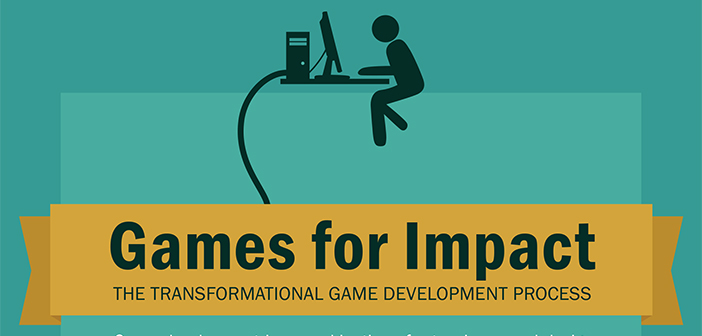Continuing the Conversation on Gaming
 We asked our panelists a few follow up questions from our third Health Communication Innovation Webinar on Gaming. Below, the panelists touch on issues such as fluency, systems thinking, and what sector games belong in.
We asked our panelists a few follow up questions from our third Health Communication Innovation Webinar on Gaming. Below, the panelists touch on issues such as fluency, systems thinking, and what sector games belong in.
Q: From your perspective, what sector do serious games belong in (i.e. should games be looked at as a public good or a corporate product)?
Sherry Youssef: I believe that serious games can be used in every and any sector. They are a medium for intervention and are cross cutting in every meaning of the word. Like most other ICT applications they are a mode to delivery services and create impact and hence should not be confined to any one sector. That being said they have moved much father along in terms of development in some sectors (I.e. Education and health). They are also at present the most powerful means of youth intervention and targeting youth.
Parvati Dev: Both sectors, of course. My focus is on the corporate sector, and what may be the long term market for serious games. The drivers on the supply side are the widespread use of and access to video games and mobile phones worldwide, as well as the new digital tools (read Unity game engine, and the many low cost or open source 3D graphic applications), available to small businesses, to create engaging games. On the demand side, learners are tech savvy, and management perceives serious games as a solution to the problem of delivering training throughout a large enterprise while increasing retention because of the engaging natures of games.
Q: Sherry, in terms of civic engagement for Our City, could you go into a bit more detail about “systems thinking” and how youth can benefit from advancing those critical thinking skills?
Sherry Youssef: The Systems thinking that OurCity is aiming to instill is one of analytical 21st century thinking skills. Most revolve around decision making, analytical thinking (meaning when you choose to focus your resources on one component of your city you are sacrificing another area) also about consensus building. In OurCity you have to gauge the communities willingness for certain decisions and this demonstrates how engagement and consensus is critical in effective city management and later in life management. Additionally, critical thinking – meaning the ability to research and analyze issue, identify solutions, and understand implications. Our specific areas are:
- Civic Attitudes/Beliefs
- Willing to reflect upon others’ points of view and commit to well-being of a larger group
- Belief that it is important for citizens (and themselves) to engage in national/community decision-making and development
- Belief that people have right to different opinions and diversity of opinion is healthy
- Belief that people of different backgrounds all have a place in society
- Belief that transparency/accountability are important for a healthy society
- Civic Behaviors
- Actions supporting the common good (e.g. volunteering) and engaging in political processes and actions (e.g. voting, joining civic groups)
- Seek information on specific topics without rewards/incentives
- Utilize multiple sources of information when researching a problem/issue
- Engage with real-world development programs
- We believe all of these are life long learning skills that any productive and effective citizen will benefit from.
Q: How much fluency is required for most serious games? That is, for an audience unfamiliar with the digital realm, are serious games still a good method for learning?
Sherry Youssef: This is highly dependent upon the type of game you are building as well as the platform. Some simple mobile games require little if any fluency other than how to use a mobile. Other games, ie. Ones on Facebook platform require a basic understanding of how these games work. Serious games can be built to accommodate the target audience’s technical capacity. This should not be a constraint. However, what must be noted is that the deeper the learning objectives the more complex the game needs to be. So lighter game means lighter learning.
Parvati Dev: Computer-based serious games may not be for everyone, but games on the phone can be straight forward enough to address even the digital illiterate. Having said that, I believe we still have to develop a game “language” that develops universal acceptance. An example from a different medium is dialog in movies — the camera pans from one face to the other, and we perceive that these two are conversing, even if we do not see them face-to-face. Similarly, in cartoons, when the roadrunner lifts his leg, and a little spiral of dust is show, we know that he is just about to start running. Many movie metaphors can be moved to the game world but, for interactivity, every developer solves their problems anew.
Q: How important do you find the design and interface of the game to be in order to engage an audience? For example, does the animation and graphics have to be very advanced to engage an audience?
Sherry Youssef: Again this depends on the target audience if you are going after youth it MUST be very interactive, fun, the design hip and the updates frequent. If you are doing an in classroom education game updates are less critical. So again it really depends on the goal of the game and the target audience.
Parvati Dev: Design and interface are extremely important. That is different from saying that animation and graphics have to be high fidelity — they do not. One of our more successful applications actually used the flat coloration of graphic novels to represent the world of the battlefield hospital. What is really important is the experience. The design and the interface should keep the user engaged in the experience, and not require them to pop out and try to understand what the computer wants them to do.
Q: Where do you see the future of serious games going? At least, what do you think the potential of serious games is?
Sherry Youssef: I think we have just seen the beginning and it is going to take off and really be a very regular mode of interaction, learning and training with the next generation. Games are here to stay and we have just started to understand their potential impact.
Parvati Dev: Serious games will be the foundation of experiential learning, and experiential learning will become one of the important tools in the education of the future. Both at the level of professional practitioner (airline pilots, hospital nurses, nuclear reactor technicians, car mechanics) and at the level of the young learner (learning social sciences, mathematics, chemistry), learning will be inside “authentic experiences”. These experiences will help the learner use the concepts learnt in the classroom, or in an e-book, to solve the problems and tasks in the simulated environment of the experience, making the “book knowledge” meaningful in a realistic context. I fully expect that, by 2020, almost every professional practitioner will be doing some of their learning in a serious game. Penetration into the world of the K-12 classroom may be slower, because of the tighter constraints about what can be introduced into these environments.
Sherry Youssef is the Program Manager for the Innovations for Youth Capacity and Engagement (IYCE) project which is piloting the first virtual-meets-real-world serious game for youth engagement, Our City. She has almost two decades of experience in international economic development as a youth workforce specialist and a MENA business development expert.
Dr. Parvati Dev, President and CEO of Innovation in Learning, has 35 years of experience developing technology solutions to support life sciences learning and research, including leading groups of engineers and scientists in corporate and academic settings. At Stanford University she founded and ran an internationally recognized learning technologies lab, SUMMIT, that produced innovations in multimedia, web and simulation for medical education.
– See more at: http://www.healthcommcapacity.org/blog/continuing-conversation-gaming#sthash.m7BBJP8D.dpuf








Leave a Reply
Want to join the discussion?Feel free to contribute!